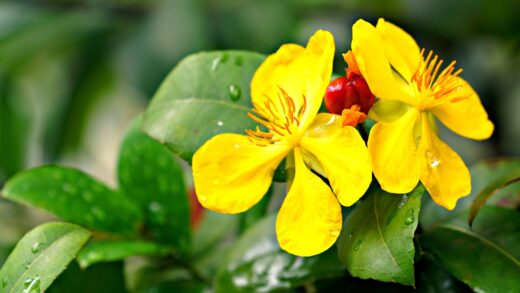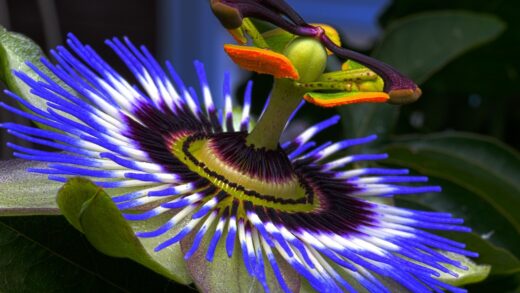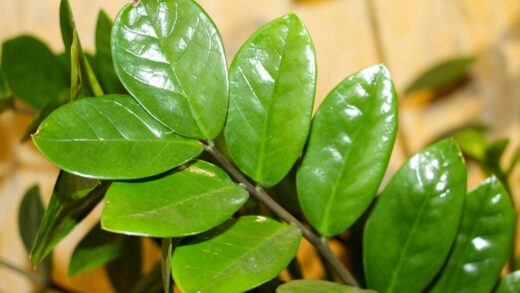Understanding the water requirements of marigolds is fundamental to their successful cultivation, as proper irrigation directly impacts their health, vigour, and flowering capacity. These resilient annuals have a reputation for being drought-tolerant once established, yet their performance is significantly enhanced with consistent and appropriate watering. The key to effective irrigation lies in balance—providing enough moisture to support robust growth and prolific blooming without creating the overly saturated conditions that can lead to root diseases. Mastering the art of watering marigolds involves learning to read the cues from the plant and the soil, adapting your practices to the changing weather, and employing techniques that deliver water efficiently to where it is needed most.
The life stage of the marigold plays a significant role in determining its water needs. Newly sown seeds and young seedlings are particularly vulnerable to drying out and require a consistently moist environment to germinate and establish strong root systems. During this critical early phase, the soil should be kept damp but never waterlogged. As the plants mature and their roots penetrate deeper into the soil, their water requirements change, and they develop a greater tolerance for drier conditions. However, even mature plants will suffer during prolonged periods of drought, resulting in wilting, reduced flower production, and increased susceptibility to pests like spider mites.
The environment in which the marigolds are grown also heavily influences their need for water. Marigolds planted in containers, hanging baskets, or window boxes will dry out much more quickly than those planted in garden beds, necessitating more frequent irrigation. The soil type is another crucial factor; sandy soils drain rapidly and require more frequent watering, whereas heavier clay soils retain moisture for longer periods. Additionally, weather conditions such as high temperatures, strong winds, and low humidity will all increase the rate of water evaporation from the soil and transpiration from the plant’s leaves, thereby increasing the demand for water.
Effective irrigation is not just about how often you water, but also how you water. The best practice is to apply water slowly and deeply, allowing it to soak into the soil and reach the entire root zone. This encourages the development of a deep, extensive root system, which makes the plant more resilient and better able to find water during dry spells. Shallow, frequent watering, on the other hand, promotes a shallow root system that is more vulnerable to drought stress. By adopting proper watering techniques and paying close attention to the needs of your plants and their environment, you can ensure your marigolds remain hydrated, healthy, and vibrant throughout the growing season.
Watering newly planted marigolds
The period immediately following planting, whether from seed or as transplanted seedlings, is a critical time for marigolds, and proper watering is paramount for their successful establishment. For directly sown seeds, the primary goal is to keep the top layer of soil consistently moist to facilitate germination. The soil should feel like a damp sponge—not dry and crumbly, and not muddy or waterlogged. Using a watering can with a fine rose or a hose with a gentle spray setting is ideal, as a forceful stream of water can easily wash away the small seeds or displace the soil covering them.
More articles on this topic
For young seedlings that have been transplanted into the garden, the initial watering is crucial for settling the soil around the delicate root ball and eliminating air pockets. Water them in thoroughly right after planting, providing a deep, slow soak that ensures the entire root zone is moistened. This initial drink helps to reduce transplant shock and gives the roots immediate access to the water they need to begin growing into their new environment. In the first week or two after transplanting, check the seedlings daily, as their small root systems are not yet capable of drawing water from deep within the soil.
During this early stage of growth, consistency is more important than volume. It is better to provide moderate amounts of water regularly than to subject the young plants to a cycle of extreme drought followed by flooding. The frequency of watering will depend heavily on your local weather and soil conditions. In hot, sunny weather, you may need to water every day, while in cooler, overcast conditions, every two or three days might suffice. The best way to determine if it is time to water is to feel the soil; insert your finger about an inch deep, and if it feels dry at that depth, it is time to provide more moisture.
As the seedlings grow and become more established, you can gradually begin to decrease the frequency of watering. This encourages the roots to grow deeper into the soil in search of moisture, which builds a stronger, more resilient plant. This transition from frequent, shallow watering to less frequent, deeper watering is a key step in helping your marigolds develop the drought tolerance they are known for. By providing attentive care during this initial establishment phase, you set the stage for healthy, vigorous plants that will require less intensive care later in the season.
Irrigation for established plants
Once marigolds have become well-established in the garden, typically a few weeks after transplanting, their watering needs change. Their root systems will have grown more extensive, allowing them to access moisture from a larger volume of soil. At this stage, they are remarkably resilient and can tolerate short periods of dryness. The most effective watering strategy for mature plants is to water deeply but infrequently. This approach encourages the roots to continue growing deeper, making the plants even more self-sufficient and better equipped to handle periods of drought.
More articles on this topic
A deep watering means applying enough water to moisten the soil to a depth of at least 15 to 20 centimetres. The goal is to thoroughly saturate the root zone, then allow the top few centimetres of soil to dry out completely before watering again. This wet-dry cycle is much healthier for the plant than keeping the soil constantly damp, as it allows oxygen to penetrate the soil, which is essential for healthy root function. A soaker hose or a drip irrigation system is an excellent tool for deep watering, as it delivers water slowly and directly to the soil, minimizing evaporation and preventing water from splashing onto the foliage.
The frequency of deep watering will vary greatly depending on several factors. In the peak of summer, during hot and dry spells, you may need to water your marigolds deeply once or twice a week. However, during cooler periods or after a significant rainfall, you may be able to go much longer between waterings. Always check the soil before you irrigate. A simple check with your finger or a trowel will tell you if the soil is dry at a depth of a few centimetres. It is always better to water thoroughly when the plant needs it rather than sticking to a rigid, predetermined schedule.
Observe your plants for signs of water stress. Wilting leaves during the hottest part of the day can be a clear indicator that the plant is thirsty. However, it is important to note that some temporary wilting in extreme heat is normal, and the plant will often recover as temperatures cool in the evening. If the leaves are still wilted in the morning, it is a definite sign that the plant needs a deep watering. By paying attention to both the soil and the plant itself, you can provide the right amount of water at the right time to keep your established marigolds thriving.
Watering marigolds in containers
Marigolds grown in containers, pots, and hanging baskets have different watering requirements compared to those planted in the ground. The limited volume of soil in a container dries out much more quickly, especially on hot, sunny, or windy days. This means that potted marigolds will almost always need to be watered more frequently than their garden-grown counterparts. During the height of summer, it is not uncommon for container-grown marigolds to require watering every single day, and sometimes even twice a day in very hot and dry climates.
The type of container can also affect how often you need to water. Porous pots, such as those made from terracotta or unglazed ceramic, allow moisture to evaporate through their sides, causing the soil to dry out faster. Plastic or glazed ceramic pots are non-porous and will retain moisture for longer. Regardless of the material, it is absolutely essential that any container used for growing marigolds has adequate drainage holes at the bottom. Without proper drainage, excess water will accumulate, leading to waterlogged soil and the inevitable onset of root rot.
When watering container marigolds, the goal is to water thoroughly until you see excess water beginning to drain from the bottom of the pot. This ensures that the entire root ball has been moistened and also helps to flush out any accumulated salts from fertilizers that can build up in the potting mix over time. After a thorough watering, allow the top inch or two of the potting mix to dry out before you water again. Never let the pot sit in a saucer full of water for an extended period, as this will keep the soil saturated and can suffocate the roots.
To help reduce the frequency of watering for container plants, you can use a high-quality potting mix that contains moisture-retaining polymers or amendments like compost or coir. Applying a layer of mulch, such as wood chips or pebbles, on top of the soil can also help to reduce evaporation and keep the roots cool. Even with these measures, regular monitoring is key. The weight of the pot can be a good indicator; a pot with dry soil will feel significantly lighter than one with moist soil. Consistent and attentive watering is the secret to keeping your container marigolds looking lush and full of blooms.
Common watering mistakes to avoid
One of the most frequent mistakes gardeners make when watering marigolds is providing too much water. While they need moisture to thrive, they are highly susceptible to root rot in soggy, poorly drained soil. This problem is often caused by watering too frequently without allowing the soil to dry out between sessions. The symptoms of overwatering can be surprisingly similar to those of underwatering—yellowing leaves, wilting, and stunted growth—which can lead a gardener to mistakenly apply even more water, exacerbating the problem. The solution is simple: always check the soil moisture before watering and ensure your garden beds or containers have excellent drainage.
Another common error is shallow watering. Lightly sprinkling the soil surface every day might seem like a good idea, but it only moistens the top few centimetres of soil. This encourages the plant to develop a shallow, weak root system that is highly vulnerable to drying out and heat stress. It is far more beneficial to water less frequently but more deeply, soaking the soil to a depth that encourages roots to grow downward in search of a more reliable water source. A strong, deep root system is the foundation of a healthy, drought-resistant plant.
Watering at the wrong time of day can also lead to problems. Watering in the middle of a hot, sunny day is inefficient, as a significant portion of the water will evaporate before it can be absorbed by the roots. Watering in the evening, especially with overhead sprinklers, can leave the foliage wet overnight, creating the perfect conditions for fungal diseases like powdery mildew to take hold. The ideal time to water is early in the morning. This gives the plants the hydration they need to get through the heat of the day, and any moisture that gets on the leaves has ample time to dry in the morning sun, reducing the risk of disease.
Finally, forgetting to adjust your watering schedule based on the weather is a frequent oversight. A rigid schedule of watering every other day, for example, does not account for a week of cool, cloudy weather or a sudden heatwave. It is crucial to be flexible and responsive. After a heavy rain, you may not need to water for several days. Conversely, during a period of hot, windy weather, you will need to increase the frequency of your irrigation. Paying attention to the weather forecast and, most importantly, the condition of the soil and your plants is the best way to avoid common watering mistakes.


















